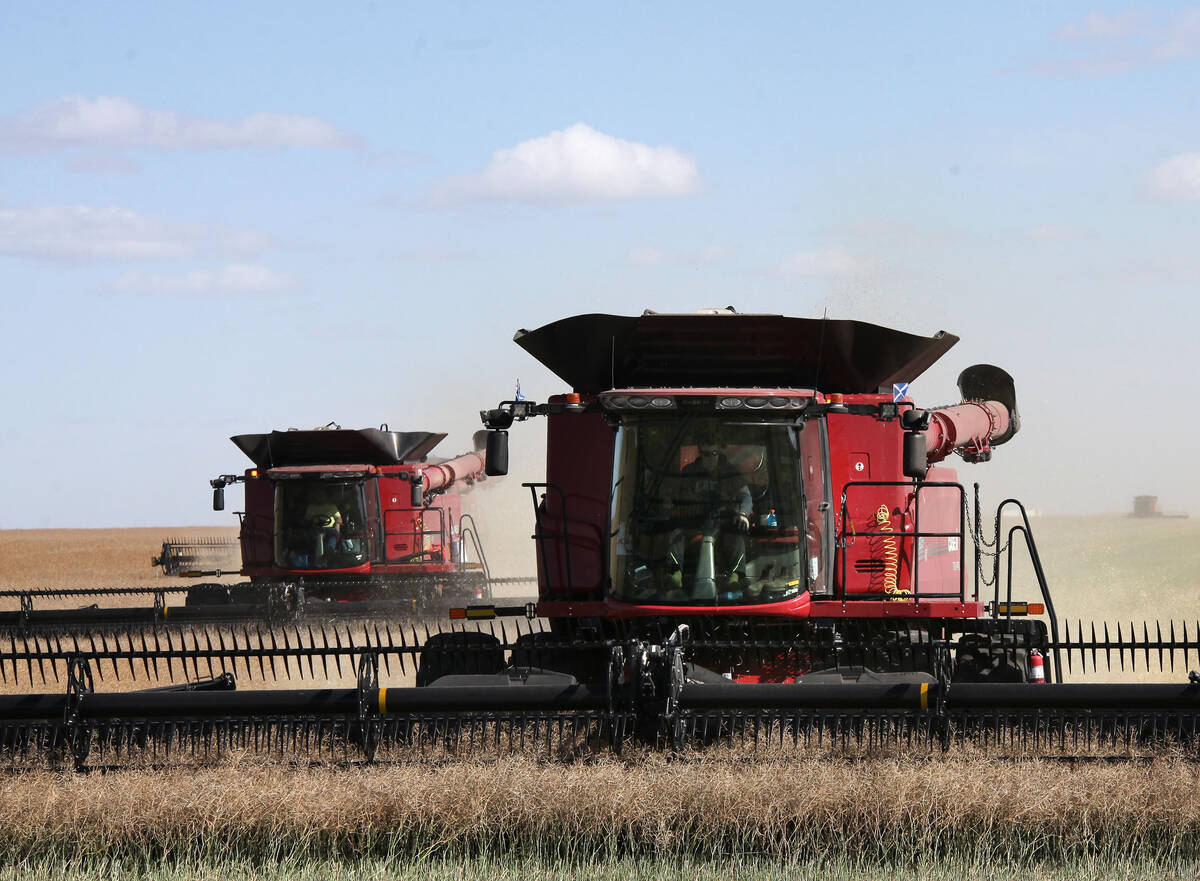Hot temperatures and a lack of moisture saw crops in Saskatchewan continue to advance rapidly during the week ended Aug. 5, according to the latest provincial crop report, with the conditions leading to a further decline in yield potential.
While any moisture received would be too late for advanced crops, producers indicated precipitation would still be beneficial for later seeded crops to help with grain fill along with supporting pasture conditions.
The heat and dry conditions have brought harvest on quickly in some regions of the province. The harvest was two per cent complete across the province, which was in line with the five- and 10-year averages. The southwest region was the most advanced, at four per cent complete, followed by one per cent complete for the southeast and east-central regions. All other producers were preparing for harvest by getting equipment ready, cleaning out bins and hauling grain.
Read Also

Notable changes in exports to China, India
China and India figured prominently in the September export data issued by the Canadian Grain Commission on Nov. 7. For the most part, the CGC’s numbers highlighted issues with grain, oilseed and pulse exports from licensed facilities to those countries.
On a crop-by-crop basis, fall rye was 15 per cent harvested followed by winter wheat at 12 per cent harvested. Nine per cent of field peas were harvested and eight per cent of lentils have been harvested.
Many producers were wrapping up their haying and silage operations. Provincially, dryland alfalfa yields were estimated to be 2.13 tonnes per acre, while greenfeed is estimated to be 2.63 tonnes per acre. Irrigated alfalfa yields were estimated to be 2.79 tonnes per acre, with greenfeed yield estimated at 3.34 tonnes per acre. Silage yields are estimated to be 5.67 tonnes per acre provincially.
Topsoil moisture continued to decline, with cropland topsoil moisture rated as 29 per cent adequate, 53 per cent short and 18 per cent very short. Hayland topsoil moisture was reported at 27 per cent adequate, 51 per cent short and 22 per cent very short. Pasture topsoil moisture was 20 per cent adequate, 50 per cent short and 30 per cent very short.
The lack of moisture and heat continued to be the main cause of crop damage across the province. Wind, aphids and grasshoppers also caused crop damage over the past week with varying degrees of damage reported. As canola continues to mature, producers were observing sclerotinia stem rot emerging in their fields.















